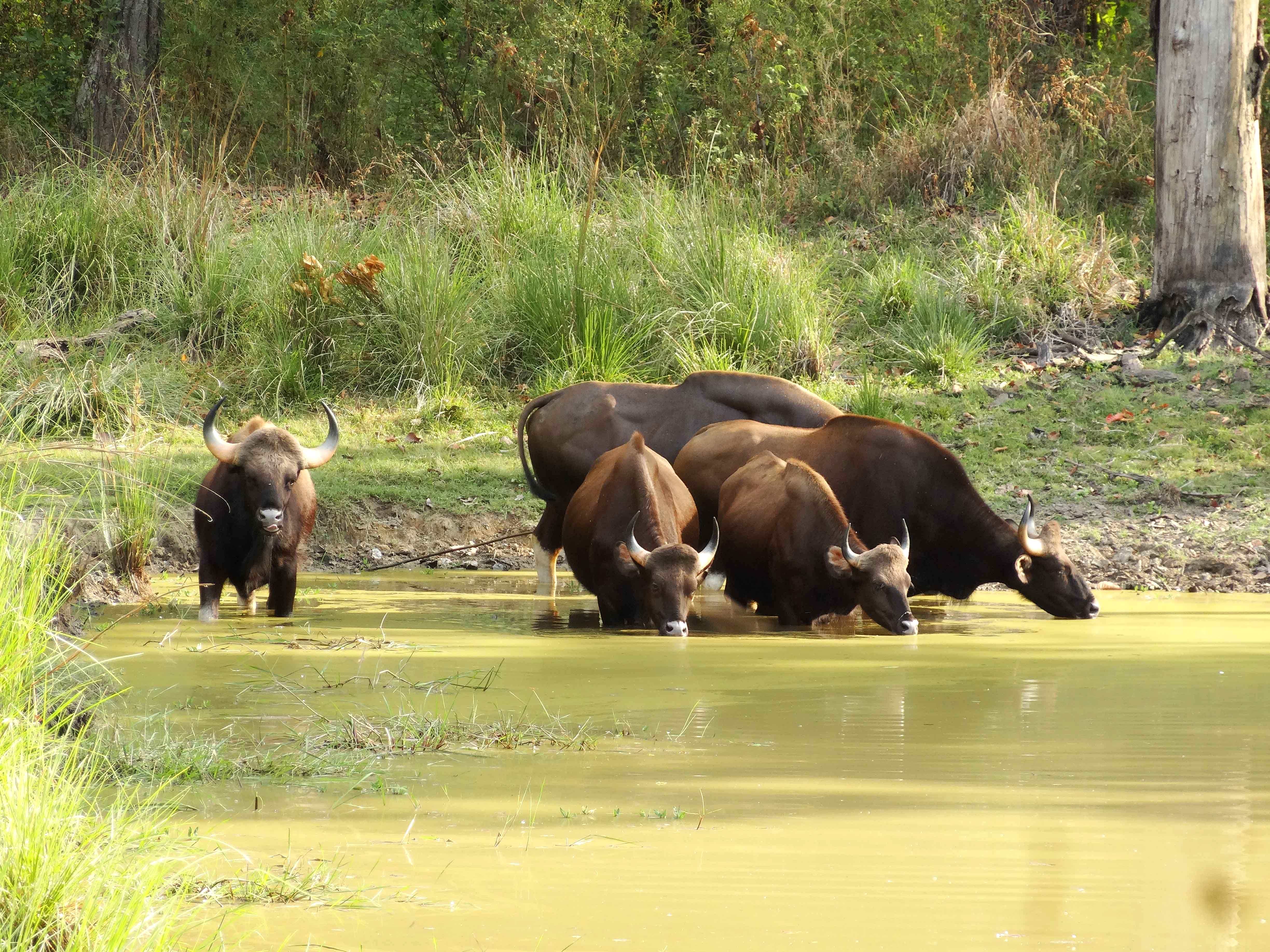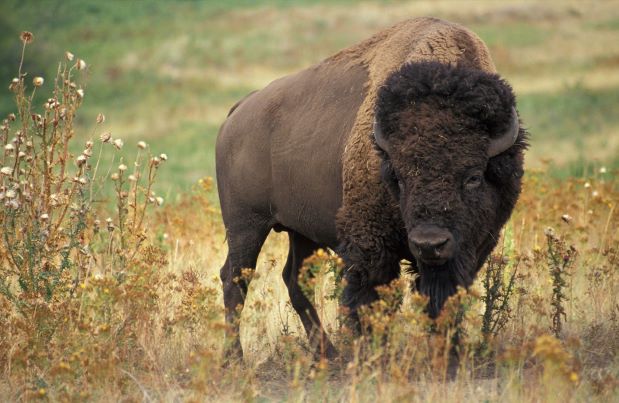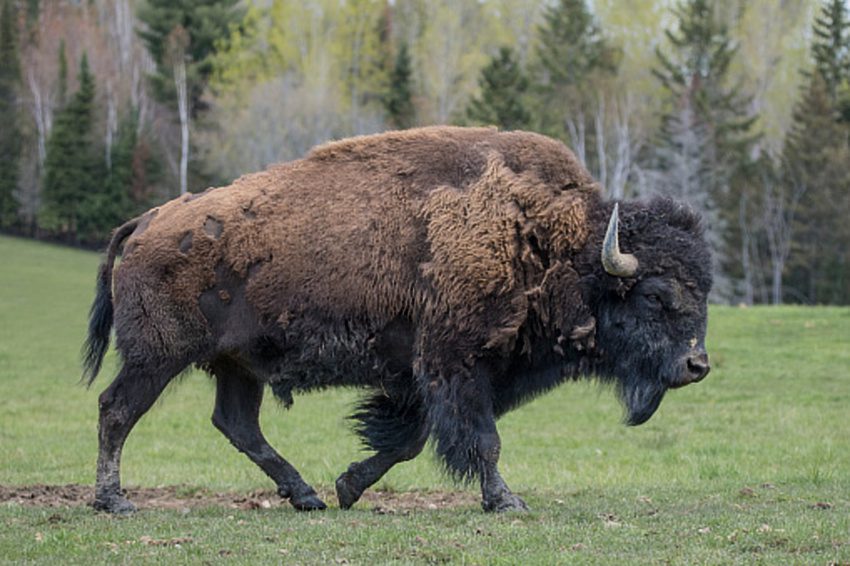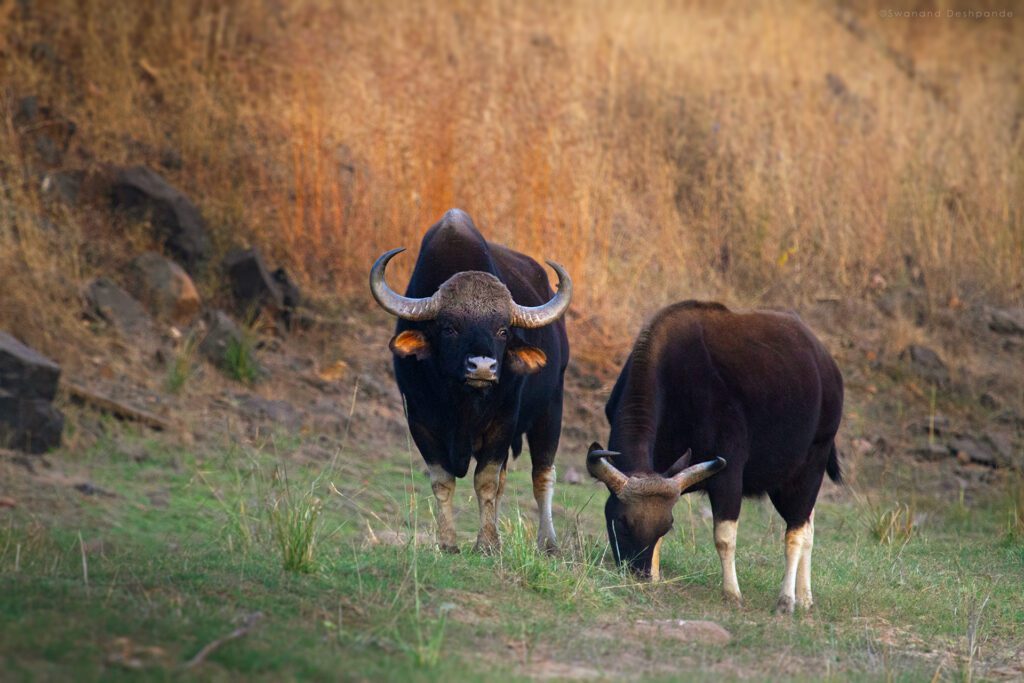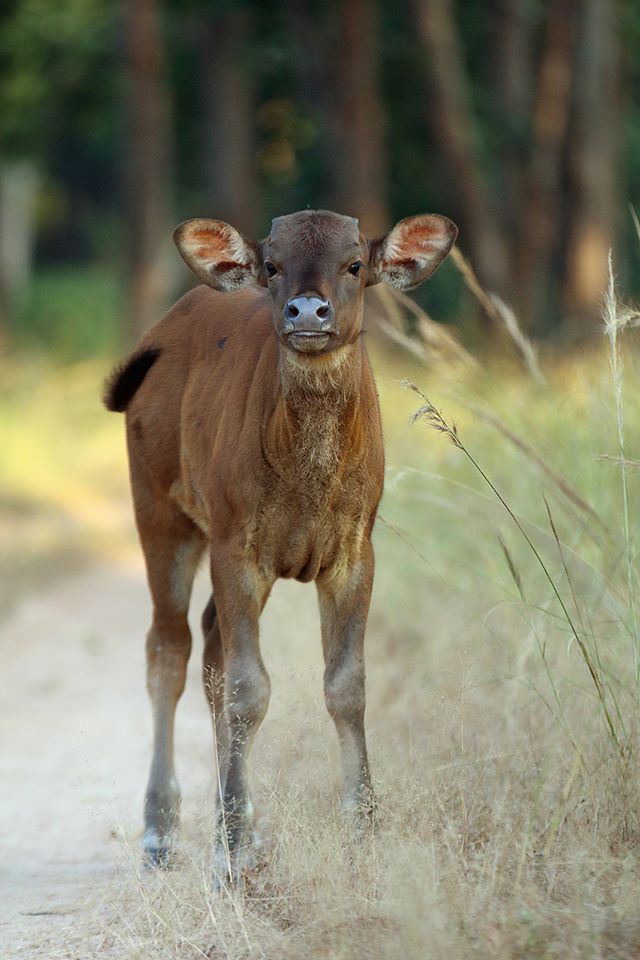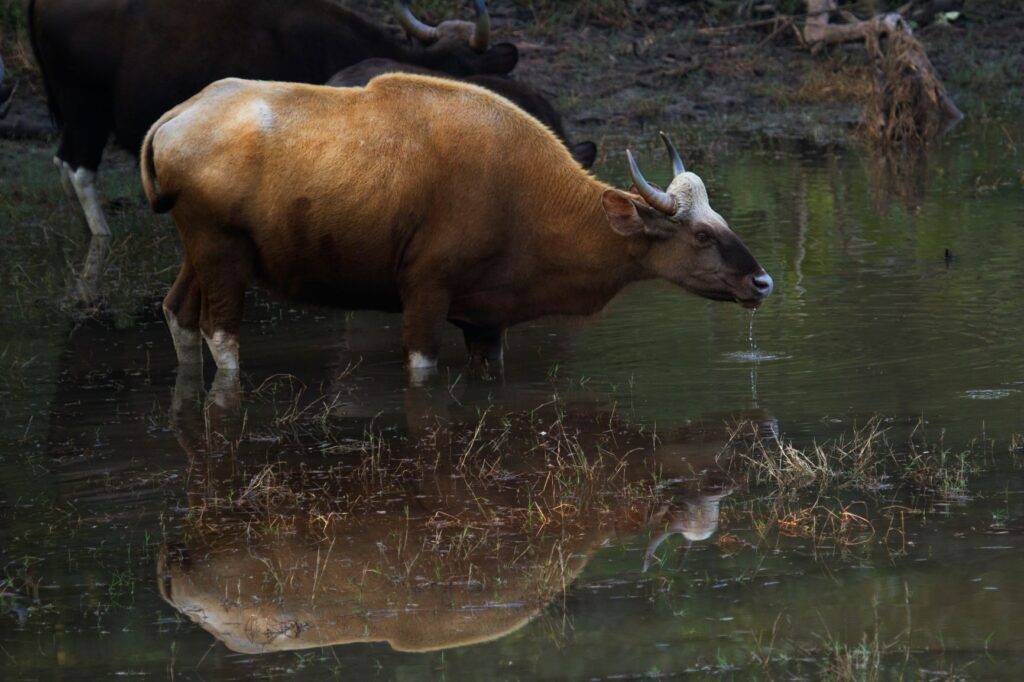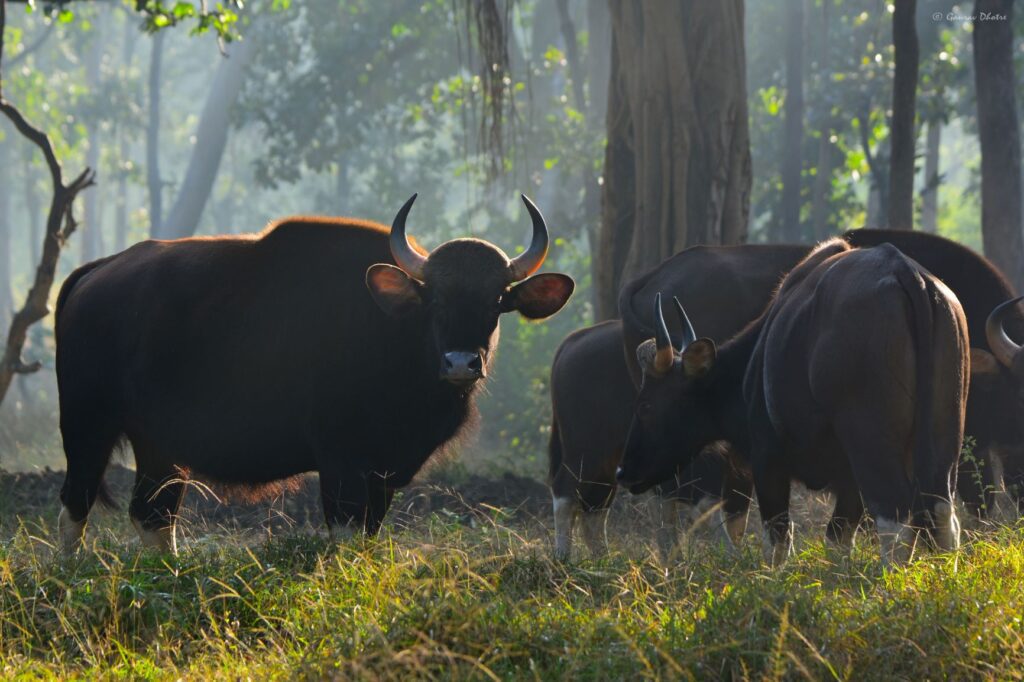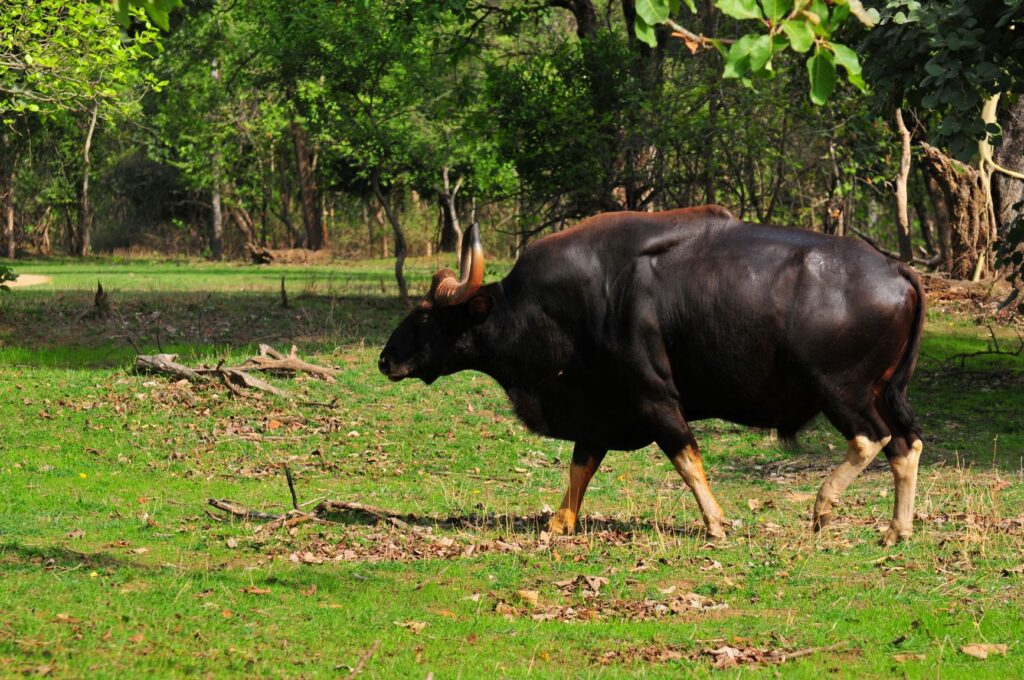Denizens of our emerald forests, Gaur is one of the largest living bovines, ruling certain grounds of the Indian sub-continent. A native to south and southeast Asia, this bulky bovine is often misinterpreted as Bison which is technically wrong, so let’s look at the difference between Gaur in India and Bison.
American Bison (Bison bison)
American Bison (Bison bison) are mistakenly called Buffalo or American Buffalo. These references can be slightly confusing as they are not the species related to African Buffalo (Syncerus caffer) or the Asiatic Buffalo (Bubalus arnee). American Bison are extremely large animals having a body length of 2 to 3.5 meters, and weighing between 500 to 1000 kilograms. Both males and females have short curved horns. The American Bison is covered with hair to protect them from harsh cold winters.
The head of this majestic creature hangs lower to its shoulders which is one of its most striking features. It’s better to avoid these boastfully handsome beings, as they can be highly aggressive.
One of the largest mammals in North America, the American Bison became the national mammal of the United States on May 9, 2016, as they were brought back from the brink of extinction which was due to rampant poaching and habitat loss.
American bison are migratory and prefer open lands, semi-arid lands, and river valleys. They can walk for miles in search of food and seasonal weather change. Water is one of the most essential necessities of this bovid, which also plays a role in their migration.
Found at: Few places like Janos Biosphere Reserve (Mexico), and Brown Wood Park (Canada) are known for this herculean being. Yellowstone National Park in Wyoming holds a special place as the American bison are known to be the pure descendants who rule the grounds of Yellowstone since prehistoric times.
Indian Gaur (Bos gaurus)
Indian gaur (Bos gaurus) falls in the group of wild oxen, which include bison, true cattle, African Buffalo and Asiatic Buffalo. An even-toed ungulate Gaurs belong to the family of Bovidae (sub-family Bovinae) in the order of ‘Artiodactyl’ and is the tallest wild cattle one can ever encounter. The ancestors of gaur have been traced back 20 million years ago, and are largely confined to India, Nepal, Bhutan, China, Thailand, Laos, Malaysia, Bangladesh, and Myanmar. In India, this bulky beast has many different local names like Gauri-gai (Hindi), Gawa (Marathi), Kattu-Pothu (Malayalam), and Methun (Assamese).
A massively built Bovid stands about 1.5 to 2 meters possessing a heavy-duty weight that varies from 650-1200 kilograms. Males are dark and large comparatively than females, have two prominent dewlaps, with white stockings from hoof to hock. Gaurs have a gigantic head with protruding grey forehead ridge between the upwardly curved horns, which is called Boss. These stature cattle have a dramatic muscular ridge upon their shoulders slopping down to its back, which makes them even more magnificent.
Found at: Having a wide range of habitats, Gaur can be found in tropical to semi-wet evergreen forests, bamboo forests, and tropical moist to dry deciduous forests. India has three main detached pockets where this massive herbivore thrives. These include Central Indian Highlands, Eastern Ghats (Odisha) up to North-East, and Western Ghats to the Nilgiris plateau.
During the time of rut, these bulky Bovids unveil a ‘moo’ call, which travels a distance of 1 to 1.5 kilometers. Gaur’s time of mating and rut varies, but the gestation period last for nine months with a single calf. At times of birth, a newborn calf changes color from golden yellow to brown. On becoming juvenile after three to four months they develop white stockings and brown coats. A full-grown bull turns jet black in color, whereas a female will still possess slight brown pelage.
Being generalist feeders, they become grazers of grass and browsers of leaves from season to season. Gaur feeds for 10 to 15 hours a day and their diet chiefly includes fruits, foliage, shoots, buds, bamboo, herbs, and grass. They enjoy salt licks as it fulfill their calcium and mineral content. Gaurs can be found in a group of 5-12 individuals. Sometimes big groups of 20-50 gaurs have been seen.
This gregarious forest inhabitant is shy by nature unless tormented. They rarely fight but if they do, gaurs would end up hurting each other brutally. When threatened they snort and produce high pitch whistles. If the danger persists, they exhibit lateral display to shoo away the predator.
Here is an image of a leucistic Gaur, i.e. an abnormal condition of pigmentation with pale patches caused by a genetic mutation inhibiting melanin which gets deposited on skin and hair.
Unlike Tiger, Mugger Crocodiles and Wild Dogs; Gaurs do not have natural predators, still their populations declined due to habitat loss and contagious disease of rinderpest and anthrax. Indian Gaur is an endangered species of wild flora and fauna under schedule-1 of the Indian Wildlife Protection Act 1972. IUCN has categorised these wild cattle as vulnerable.
Therefore, Gaur is not a Bison, it is genetically related to wild cattle not to the Buffalos. Thus the American Bisons are the true bison thereby making these two species totally different.
Success Story From The Wild
In the late 1990s, Gaur in Madhya Pradesh was locally extinct in Bandhavgarh National Park, due to habitat loss. In consultation with the Wildlife Institute of India, the Government of Madhya Pradesh assimilated a project to reintroduce gaurs back to Bandhavgarh. This Project finally got approved and was carried out in two phases.
Some 50 gaurs were translocated from Kanha Tiger Reserve to Bandhavgarh Tiger Reserve in 2011 and 2012. Being a key species of the ecosystem, this reintroduction was indeed a necessity. The reintroduction of Gaurs was a success and at present, there is a healthy population of Gaurs thriving in Bandhavgarh National Park.
Fun Facts About Gaurs
- Gaur is the state animal of Goa and Bihar.
- 54th Infantry Division of the Indian Army made Gaur their mascot.
- Gaurs are known to feed on the bark of the tree.
- A herd of gaur is known as a gang or obstinacy.
- The famous drink ‘Red Bull’ comes from a Thai drink “Gretin Daang” which means red Gaur.
These jumbo giants are often seen strolling in the vast grounds of Indian jungles but few places like Satpura National Park, Tadoba National Park, and Kanha National Park offer some eye-catching sightings of these mighty creatures, so pack your bags and roll down to the forests to witness these fascinating species.
Written By: Himani Singh Chouhan, Naturalist at Denwa Backwater Escape.
Contact us for bespoke safari experiences:
Email : [email protected] [email protected] Call : +91-11-4013 6332.

